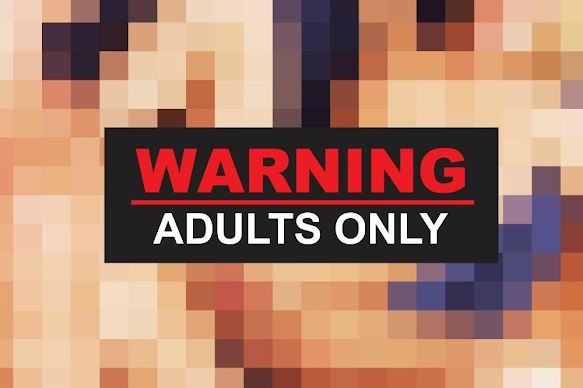18+ Content (Adult Content): Navigating a Complex World
18+ content, also known as adult content, encompasses a wide range of material deemed inappropriate for young audiences due to its explicit nature. It encompasses themes and representations related to sexuality, violence, drug use, and other potentially sensitive topics. Navigating this complex world requires a nuanced understanding of its potential benefits, risks, and ethical considerations.
Categorizing 18+ Content: Understanding the Spectrum
18+ content can be broadly categorized into the following:
- Sexuality: This includes explicit depictions of sexual activity, nudity, and related topics. It can range from artistic expression to pornography and sexually explicit media.
- Violence: This encompasses graphic portrayals of physical aggression, gore, and violence against humans or animals. It can be found in movies, video games, and other forms of media.
- Drug Use: This showcases the consumption or depiction of drugs and related paraphernalia. It can be present in movies, music, and even online communities.
- Hate Speech: This involves discriminatory language or material targeting specific groups based on race, ethnicity, gender, or other factors. It can be found on social media platforms and online forums.
It's important to recognize that the definition and boundaries of 18+ content can vary across cultures, individual values, and legal frameworks. What might be considered acceptable in one context may be deemed offensive or harmful in another.
Potential Benefits and Risks of Engaging with 18+ Content
While often associated with negative connotations, 18+ content can offer certain benefits:
- Exploration and Education: It can serve as a source of sexual education and exploration, fostering healthy development and understanding of adult themes.
- Art and Entertainment: It can provide artistic expression and entertainment for individuals seeking mature content and storytelling.
- Community and Connection: It can facilitate community formation and connection for individuals with specific interests or shared experiences.
However, it's crucial to acknowledge the potential risks:
- Addiction and Compulsive Behavior: Excessive exposure can lead to addiction and compulsive behaviors, negatively impacting personal life and relationships.
- Unrealistic Expectations and Distorted Views: It can create unrealistic expectations about sex and relationships, potentially leading to unhealthy comparisons and dissatisfaction in real-life interactions.
- Exposure to Harmful Material: Individuals might encounter violent or disturbing content, leading to emotional distress or triggering negative experiences.
- Exploitation and Abuse: Some 18+ content can exploit vulnerable individuals or portray harmful behaviors, which can have negative societal consequences.
Navigating 18+ Content Responsibly: A Shared Responsibility
Creating a safe and informed online environment requires a collective effort from individuals, platforms, and society at large:
Individual Responsibility:
- Self-awareness: Recognizing personal triggers and vulnerabilities related to 18+ content is crucial.
- Informed Consumption: Understanding the potential benefits and risks of specific content is necessary before engaging.
- Balanced Consumption: Limiting exposure to 18+ content and maintaining a healthy balance with other forms of media is essential.
- Seeking Help: If experiencing negative impacts from 18+ content, seeking support from professionals or trusted individuals is important.
Platform Responsibility:
- Effective Content Moderation: Implementing robust content moderation policies to restrict harmful material while ensuring freedom of expression.
- Age Gating and Verification: Employing age verification measures to limit access to 18+ content for underage users.
- Educational Initiatives: Providing educational resources and tools to help users navigate 18+ content responsibly.
Societal Approach:
- Open Communication: Fostering open and honest conversations about 18+ content between parents, educators, and young people is crucial.
- Media Literacy Programs: Implementing educational programs that promote critical thinking skills regarding online content.
- Legal Frameworks: Establishing clear legal frameworks to regulate 18+ content and protect vulnerable individuals from exploitation and abuse.
By actively engaging with these various approaches, individuals and society can work together to create a safer and more responsible online environment for all, regardless of their chosen level of engagement with 18+ content.
Disclaimer The information contained in this blog post is for informational purposes only and should not be taken as professional advice. I am not a licensed professional in any field, and my articles should not be taken as a substitute for professional advice. I do my best to research my topics and provide accurate information, but I cannot guarantee that my articles are free of errors or omissions. If you have any questions or concerns about the information in this blog post, please consult with a qualified professional. I am not responsible for any actions taken or decisions made based on the information in this blog post.
Credits Image: https://mtltimes.ca/wp-content/uploads/2022/08/adult-content.jpg Text: Generated with the help of Bard (https://bard.google.com/), a large language model created by Google AI.
Share this post on social media if you found it helpful! Leave a comment below and let me know what you think about the blog post or correct me for any mistake. I'm always learning, and your feedback is valuable to me.
Privacy Policy: https://drive.google.com/file/d/1JIqBNHHrSgubmSqhgh7MsU6bGswEbuX_/view?usp=sharing
© 2023 Rahul Haldar

Comments
Post a Comment
Welcome to my blog! I encourage you to leave comments and share your thoughts on my posts. Please be polite and respectful in your comments, and avoid spam and hate speech.